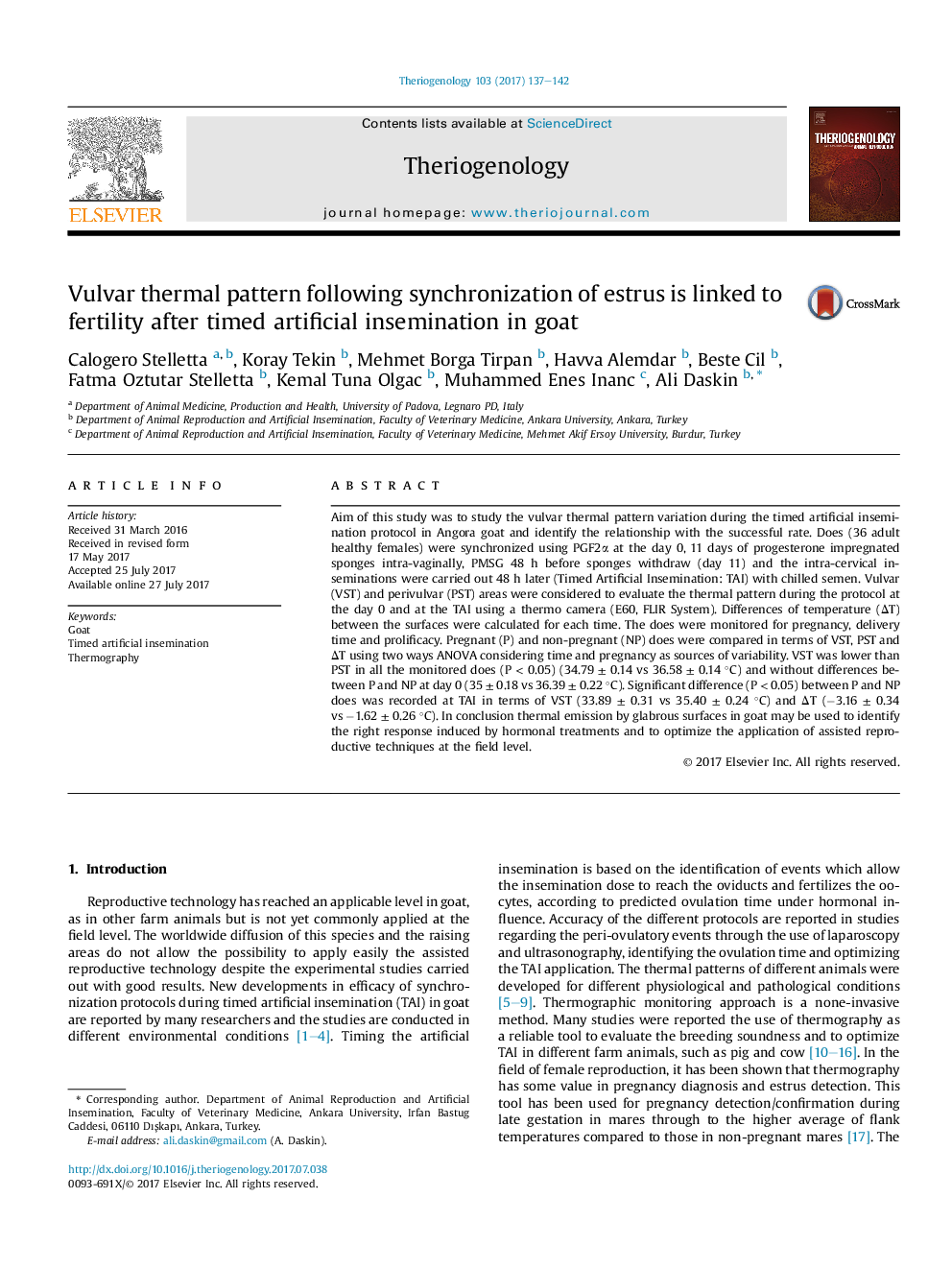| کد مقاله | کد نشریه | سال انتشار | مقاله انگلیسی | نسخه تمام متن |
|---|---|---|---|---|
| 5522914 | 1546066 | 2017 | 6 صفحه PDF | دانلود رایگان |

- Vulvar thermal pattern during timed artificial insemination in Angora goat can be used as diagnostic tool at field level.
- Vulvar surface temperature is colder than the peri-vulvar temperature.
- During TAI the high difference between vulvar and peri-vulvar temperatures indicates the risk of pregnancy.
Aim of this study was to study the vulvar thermal pattern variation during the timed artificial insemination protocol in Angora goat and identify the relationship with the successful rate. Does (36 adult healthy females) were synchronized using PGF2α at the day 0, 11 days of progesterone impregnated sponges intra-vaginally, PMSG 48 h before sponges withdraw (day 11) and the intra-cervical inseminations were carried out 48 h later (Timed Artificial Insemination: TAI) with chilled semen. Vulvar (VST) and perivulvar (PST) areas were considered to evaluate the thermal pattern during the protocol at the day 0 and at the TAI using a thermo camera (E60, FLIR System). Differences of temperature (ÎT) between the surfaces were calculated for each time. The does were monitored for pregnancy, delivery time and prolificacy. Pregnant (P) and non-pregnant (NP) does were compared in terms of VST, PST and ÎT using two ways ANOVA considering time and pregnancy as sources of variability. VST was lower than PST in all the monitored does (P < 0.05) (34.79 ± 0.14 vs 36.58 ± 0.14 °C) and without differences between P and NP at day 0 (35 ± 0.18 vs 36.39 ± 0.22 °C). Significant difference (P < 0.05) between P and NP does was recorded at TAI in terms of VST (33.89 ± 0.31 vs 35.40 ± 0.24 °C) and ÎT (â3.16 ± 0.34 vs â1.62 ± 0.26 °C). In conclusion thermal emission by glabrous surfaces in goat may be used to identify the right response induced by hormonal treatments and to optimize the application of assisted reproductive techniques at the field level.
Journal: Theriogenology - Volume 103, November 2017, Pages 137-142